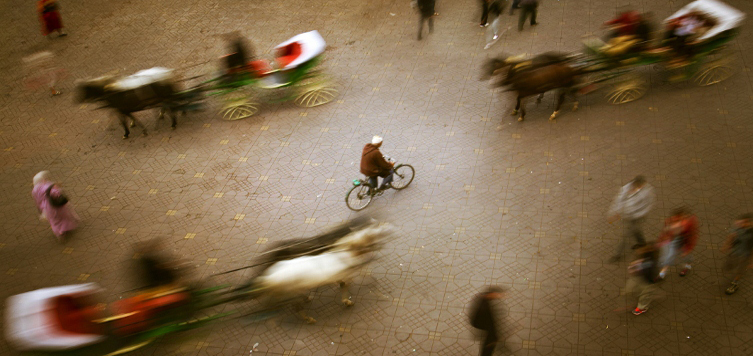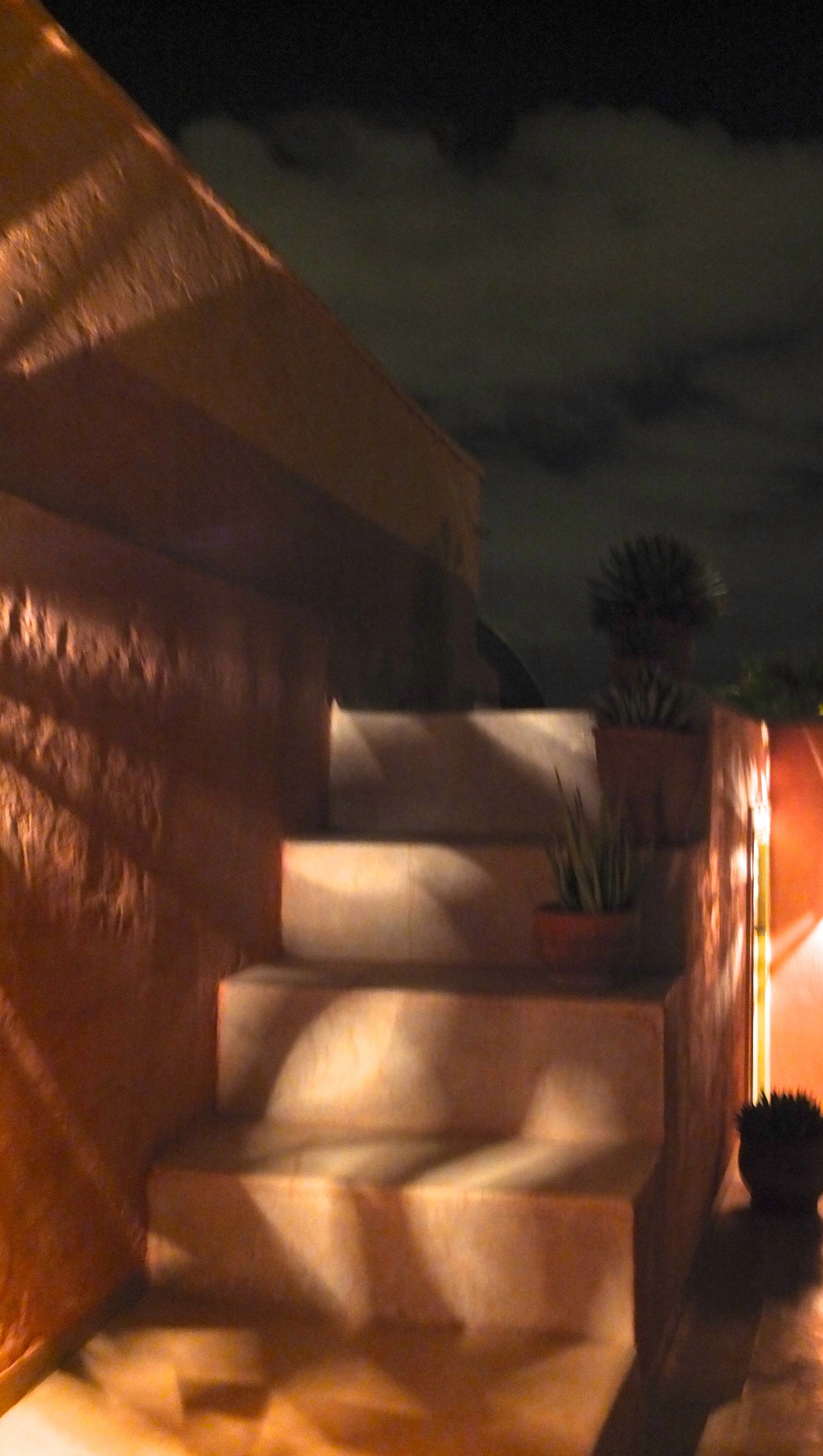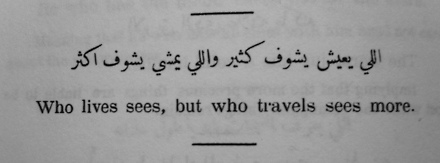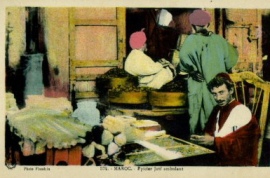– they deliver the car at Place Djemaa El Fna in the morning, and out you go into traffic. Interesting traffic. You care about what’s in front of you, they do too, means: those behind care about you, more or less. And if there is space in front, you better fill it up right NOW, or those who cares behind will definitely care about that. They will push you and stress you in there with their honking. If the space looks too small, it isn’t. Trust the honkers. Trust is necessary in Morocco traffic. In God, in Allah if you prefer, in the other drivers, in bikers and walkers and cats and dogs and sheep and goats and mules and camels.
Good thing about getting the car at La Place is that you shall not drive too far to get to a fairly straight road that takes you to wherever you want to go, like Ourika Valley, Atlas Mountains, Asni, Moulay Brahim, the plain, the Kika, the huge plain, around Marrakech. Ourika Valley is miles and miles with cheap plastic chairs in all colors along the river that runs in the bottom, plus same miles and miles of cafes with tagines waiting to be bought and had on those chairs while looking at the water passing by. – And at other people sitting in same sort of chairs, eating tagines on the other side of the river. If you go to Ourika early in the day you may wonder whom on earth shall fill all these chairs? Who shall eat all those tagines? Is it just another day of too much hope happening? But then, when you turn your car and drive down the dead end Ourika Valley you see them coming. Hordes. The road is narrow so you don’t only see them, you feel them very well when you and your more modest rented car are squeezed out into the ditch, and you patiently stay there, waiting for a gap in the tight line of big yellow taxis, 4WDs and busses, full of tagine eaters, so that you can get to eat some one, two, maybe three hundred meters of road. If you are fast. You are either fast or in the ditch. But beware, not too fast, because kids and cats and dogs, they exist.
Ourika and the foot of Atlas is green and fresh and fat and pretty. Richness is literally running down the mountains in liters, giving the thirsty red earth exactly what it needs to sprout out the produce. The geraniums looks like they have had their share of dope. They are more like small, chubby trees. Further on, when you get down, pass the round about at El Grab and get out on the plain, some places as rigid as the surface of the moon, you meet upon huge flocks of sheep and goats and their ancient looking herds in djellabas. If it wasn’t for the reason that you sit and drive in a 2012 model car it could be any time on earth. And if you, when you drive through the small villages, close your eyes to the grey and gloomy building materials of today and open them to the older houses raised from the dirt they are built on, you can keep the illusion of dissolved time.
I don’t know why timelessness is so soothing, but it is. It’s heart touching in a quiet way. It stretches history, deepens moment. You are not the end, not the beginning, not top, not bottom, you are with the past and with the future, you are part of a soft chain, you have the blood running down through, and further on, into coming generations, in you. (Pray the once in coming find the way and a will to not fill the side of roads and the riverbeds with all that plastic. Damn it.)
We took another u-turn and went by Moulay Brahim. The guide book said it was a picturesque little village with the best Atlas view, so why not. Didn’t look exactly like picturesque so, no, we drove by, but stopped on top, after the sharp hair pin bends, to check the map. Miles and miles before a new village with a lunch possibility. We turned and hair pinned back down again. Parked and went into the streets, or rather stairs, of the place. The village clings to the mountain like a baby to a mother. Must admit it was sort of picturesque when you got into it. We had something good, in the wonderful simple and down to earth way of Morocco, to eat in a little cafe on the one and only upwards winding market street. Some old berber women in colorful skirts and eyes black with kohl were having the same beside us. Easy going, proud, strong, smiling, no hiding women. And under their table the cats were given their leftovers. So park your car, go inside Moulay Brahim. Nice, if not extremely picturesque.
Then mountains and plains, plains, plains, rigid, rigid, but even so, the flocks of sheep, their newborns, their herds, the timelessness again. And everywhere, even remotely close to water, riches, riches, riches, the almonds blossoming, the blue, blue crocus along the stone fences, the greenest grass you get to see, the olive groves, the argan trees. The sky above.
At 1800 reaching Marrakech again and weird traffic.


– and then a moment og soft and quiet, but fairly rare Marrakech traffic by Nour Eddine Tilsaghani, just now with a show in Galerie de l’institute Francais on the 5.Marrakech Biennale







































